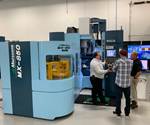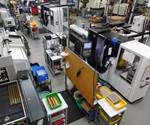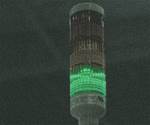Merging Advances: Lights-Out Machining Combines Automation and Focused Process Improvement
One of the most significant developments in machining right now is easy to miss because it is the union of two different advances coming together.
The role and usefulness of the internet wasn’t fully realized until smartphones arrived. Mobile devices carry that usefulness farther. Ditto, cellphones were not complete until they became smartphones leveraging the internet. Both inventions—mobile devices and the global network—were predicted, but more difficult to predict was the way they would work together. Yet part of the very nature of advancing technologies and ideas is the way they meld and find different possibilities by becoming one with other advances.
In my view, one of the most significant developments reshaping machine shops today is easy to underappreciate because it is not a single new advance. Instead, it is a new possibility resulting from other advances melding together.
The new possibility I mean is lights-out machining. To be sure, shops have run lights-out in the past. However, the commitment required has tended to preclude all but dedicated factories. Today, many small, independent shops are realizing the ability to run without employees present as well. Indeed, plenty of shops have discovered they have essentially a lower-cost manufacturing partner located not at a different site but at different hours on the clock. What opened the way to lights-out being applied so much more broadly?
Automation is only part of the answer. Automation is key, but robots, pallet systems, machines with many axes—these resources have long been available. They have aided and expanded the possibilities for shops that have adopted them, but still have not necessarily allowed these shops to run unstaffed for hours on end routinely. This technology was waiting for something else to come.
What came? In part, a mindset: continuous improvement. That is, the philosophy and practice of recognizing that a manufacturing process can always be made better. Sources of delay or uncertainty can always be addressed. Unattended machining requires not just automation but also scrupulous attention to details—chips, tools, clearances, maintenance—that might halt production when no employee is present to address small problems and prevent them from becoming big.
But continuous improvement also needed one other thing: machine monitoring. In recent years, a widespread change I have seen in machining facilities is the extent to which they have embraced shop-wide monitoring of CNCs so data on their statuses can be combined into a view of overall shop performance. Thus, improvements are no longer limited to the problems readily seen. Instead, the most important problems come to light because those problems are the reasons for the unexpected gaps of red unproductive time in a chart of machine monitoring data.
This, then, is what I’m seeing: Shops have become more automated. Shops have become more disciplined about process improvement, guided by machine monitoring. These are two different advances. But they merge to make lights-out machining more achievable, more realizable. And today, the arrival of accessible lights-out machining is a significant advance in its own right, dramatically expanding the capacity and the economic possibilities for many shops.
Related Content
-
Fearless Five-Axis Programming Fosters Shop Growth
Reinvestment in automation has spurred KCS Advanced Machining Service’s growth from prototyping to low-and mid-volume parts. The key to its success? A young staff of talented programmers.
-
CNC Machine Shop Honored for Automation, Machine Monitoring
From cobots to machine monitoring, this Top Shop honoree shows that machining technology is about more than the machine tool.
-
Lean Approach to Automated Machine Tending Delivers Quicker Paths to Success
Almost any shop can automate at least some of its production, even in low-volume, high-mix applications. The key to getting started is finding the simplest solutions that fit your requirements. It helps to work with an automation partner that understands your needs.

.jpg;width=70;height=70;mode=crop)














